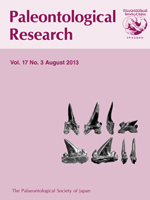The tiny marine Cambrian ‘Orsten’ Cambropachycope clarksoni Walossek and Müller, 1990 (ca. 500 Ma), a derivative of the stem lineage toward Eucrustacea (= crown group), bore an unusual anterior projection of the head that has been designated a single compound eye. The cornea only of this eye has been preserved in three dimensions and in fine detail - unprecedented for a non-trilobite, Cambrian arthropod eye. Here we investigate the ultrastructure of this cornea. The cornea was found to be relatively thin and composed of three layers: an outermost and innermost layer of transparent material (a felt work of fibrils) and a hollow middle layer containing a dark material. This middle layer appears not to be an artefact of phosphatization or the consequence of moulting; probably it was present in the living, non-moulting-stage animal. The middle layer may have functioned as a filter - filled with pigmented oil that served to filter out the blue, scattered light from sunlight, thus enhancing the appearance of tiny light signals (i.e., potential prey). This adaptation would support the model lifestyle predicted from a study of the larger anatomy of C. clarksoni as a predator. However, the cornea of C. clarksoni remains enigmatic at this stage.
How to translate text using browser tools
1 August 2013
An Unusual Cornea from a Well Preserved (‘Orsten’) Cambrian Compound Eye
Andrew R. Parker,
Brigitte Schoenemann,
Joachim T. Haug,
Dieter Waloszek
ACCESS THE FULL ARTICLE

Paleontological Research
Vol. 17 • No. 3
August 2013
Vol. 17 • No. 3
August 2013
Cambrian
compound eye
cornea
early vision
Orsten




